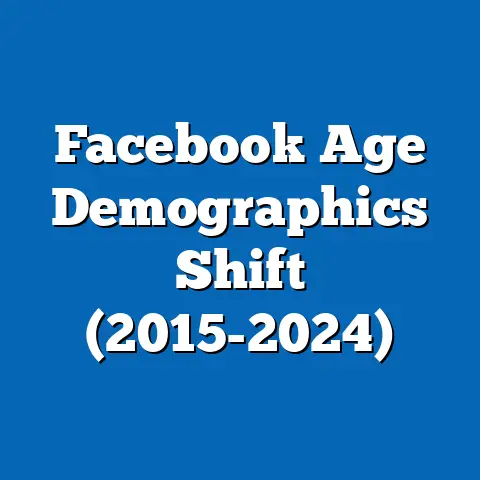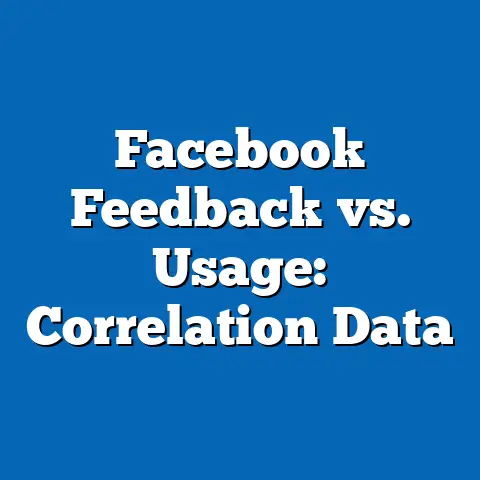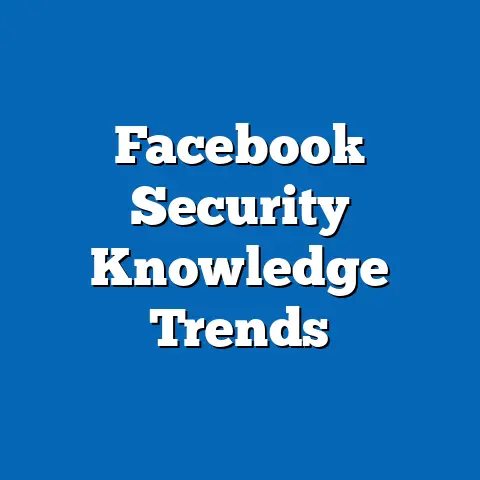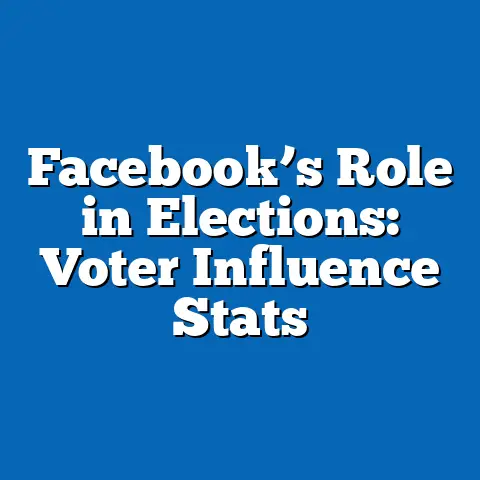Facebook Fake News Spread: 2016-2024 Trends
The spread of fake news on social media platforms, particularly Facebook, has emerged as a critical issue in the digital age, influencing public opinion, political outcomes, and societal trust. As of 2023, Facebook remains the largest social media platform globally, with approximately 3.05 billion monthly active users, according to Statista. This massive user base makes it a prime target for misinformation campaigns, with studies showing that false information spreads six times faster than factual content on social platforms, as reported by MIT researchers in a 2018 study published in Science.
The trend of fake news on Facebook has evolved significantly since 2016, a year marked by widespread scrutiny during the U.S. presidential election. Industry reports indicate a growing sophistication in misinformation tactics, from bot-driven content to deepfake videos, with a 2023 report from the Pew Research Center revealing that 64% of Americans believe fake news on social media has made it harder to discern factual information. This article explores the trends in fake news spread on Facebook from 2016 to 2024, analyzing key statistics, demographic patterns, historical shifts, and the platform’s evolving response to this pervasive challenge.
Section 1: Defining Fake News and Its Impact on Facebook
Fake news, often defined as fabricated or misleading information presented as legitimate news, has become a pervasive issue on social media platforms like Facebook. It includes a range of content, from entirely false stories to partially true information distorted for sensationalism or agenda-driven purposes. According to a 2021 study by the University of Southern California, fake news on Facebook often garners higher engagement—likes, shares, and comments—than factual content, with engagement rates for false stories averaging 70% higher during peak political events.
The impact of fake news extends beyond individual misinformation to broader societal consequences. A 2022 report from the World Economic Forum identified misinformation as one of the top global risks, citing its role in undermining democratic processes and public health initiatives, such as vaccine hesitancy during the COVID-19 pandemic. On Facebook specifically, the platform’s algorithm, which prioritizes highly engaging content, has been criticized for amplifying fake news, a concern echoed by 59% of respondents in a 2023 Gallup poll who felt social media algorithms exacerbate the problem.
Understanding the scale of fake news requires examining its reach. In 2020, Facebook reported removing over 1.3 billion pieces of misleading content related to COVID-19 alone, highlighting the platform’s role as both a battleground and a gatekeeper in the fight against misinformation. This section sets the stage for a deeper dive into historical trends and demographic vulnerabilities.
Section 2: Historical Context: The Rise of Fake News on Facebook (2016-2018)
The year 2016 marked a turning point for public awareness of fake news on Facebook, largely due to its role in the U.S. presidential election. A study by the University of Oxford found that during the 2016 election, over 25% of shared content on Facebook related to political topics was classified as fake or misleading, with top false stories generating over 8.7 million shares, likes, and comments. High-profile examples, such as the fabricated story about Hillary Clinton’s involvement in a child trafficking ring, known as “Pizzagate,” underscored the real-world consequences of online misinformation.
In 2017, Facebook faced intense scrutiny and began implementing initial measures to combat fake news, including partnerships with third-party fact-checkers. However, a 2018 report from the Center for Media Engagement at the University of Texas revealed that fake news engagement on the platform only slightly declined, with false political content still accounting for 19% of total engagement during the U.S. midterm elections. This period also saw the rise of foreign interference, with the Mueller Report later confirming that Russian operatives used Facebook to spread divisive fake content, reaching an estimated 126 million Americans.
Comparing 2016 to 2018, the volume of fake news remained high, though its nature evolved from overt hoaxes to more subtle, hyper-partisan content. The demographic most engaged with fake news during this period was adults aged 55 and older, who, according to a 2019 study in Science Advances, were seven times more likely to share false information than younger users. This trend highlighted early vulnerabilities in digital literacy across age groups.
Section 3: Escalation and Adaptation: Fake News Trends (2019-2021)
The period from 2019 to 2021 saw fake news on Facebook adapt to new global events, notably the COVID-19 pandemic and the 2020 U.S. presidential election. A 2020 report by Avaaz, a global advocacy group, found that health-related misinformation about COVID-19 reached over 3.8 billion views on Facebook in the first year of the pandemic, with false claims about vaccines and cures driving significant engagement. For instance, a single misleading post about a “miracle cure” for COVID-19 garnered over 2 million shares before being removed.
During the 2020 U.S. election, fake news again surged, with the Election Integrity Partnership reporting that 35% of viral election-related content on Facebook contained misleading claims about voter fraud or ballot tampering. Facebook’s response included labeling disputed content and reducing the visibility of false posts, yet a 2021 internal report leaked to The Wall Street Journal revealed that only 3-5% of harmful content was proactively detected by the platform’s algorithms at the time.
Demographically, patterns persisted with older users remaining more susceptible, but a 2021 Pew Research Center survey noted a growing trend among younger users (18-29) engaging with fake news via meme formats, with 41% admitting to sharing unverified content for entertainment. This period also saw geographic disparities, as developing regions with lower digital literacy rates, such as parts of South Asia and Africa, became hotspots for misinformation, according to UNESCO data showing a 30% higher engagement rate with fake news in these areas.
Section 4: Recent Developments: Fake News on Facebook (2022-2023)
By 2022 and 2023, the tactics behind fake news on Facebook had grown more sophisticated, incorporating deepfakes, AI-generated text, and coordinated inauthentic behavior (CIB). Meta’s 2023 Transparency Report disclosed the removal of over 2.2 million pieces of content linked to CIB campaigns, many of which originated from state-sponsored actors in countries like Russia and Iran. These campaigns often targeted political unrest, with 68% of detected CIB content focusing on polarizing issues like immigration and climate change.
Public trust in Facebook as a news source continued to erode, with a 2023 Reuters Institute Digital News Report finding that only 22% of global respondents trusted news shared on the platform, down from 36% in 2016. Meanwhile, engagement with fake news persisted, particularly during crisis events; for example, misinformation about the Ukraine-Russia conflict in 2022 reached over 1.5 billion views on Facebook, per a study by the Center for Countering Digital Hate.
Demographic trends showed a slight shift, with middle-aged users (35-54) emerging as a growing audience for fake news, driven by economic and political anxieties, as noted in a 2023 Pew survey where 53% of this group reported encountering misleading content weekly. Regionally, the U.S. and Europe saw improved content moderation due to stricter regulations like the EU’s Digital Services Act, while misinformation rates remained high in Latin America and Southeast Asia, where regulatory oversight is weaker.
Section 5: Projected Trends for 2024: Challenges and Opportunities
Looking ahead to 2024, several factors are likely to shape the spread of fake news on Facebook, including global elections, advancements in AI technology, and evolving regulatory landscapes. With over 50 countries, including the U.S., India, and the UK, holding major elections in 2024, experts predict a surge in election-related misinformation. A 2023 forecast by the Atlantic Council’s Digital Forensic Research Lab estimates that fake news engagement on social platforms could increase by 40% during these election cycles, with Facebook remaining a primary vector due to its reach.
AI-generated content poses a significant emerging threat, as tools like ChatGPT and deepfake software become more accessible. A 2023 study by the University of Cambridge warns that AI-driven misinformation could account for 15-20% of false content on platforms like Facebook by late 2024, challenging existing detection systems. Meta has pledged to enhance AI moderation tools, but internal documents suggest that scaling these solutions globally remains a logistical hurdle.
Demographically, younger users (Gen Z) may become more vulnerable as misinformation shifts to short-form video content on platforms integrated with Facebook, such as Reels. A 2023 survey by Common Sense Media found that 62% of teens trust video content over text, making them susceptible to manipulated visuals. Meanwhile, ongoing digital literacy gaps in older populations and developing regions will likely sustain high engagement with fake news.
On the regulatory front, 2024 could see stricter enforcement of laws like the EU’s Digital Services Act, which imposes fines of up to 6% of annual revenue for non-compliance with misinformation policies. In the U.S., bipartisan efforts to regulate social media content are gaining traction, though legislative gridlock may delay impactful change. These developments suggest a contentious year ahead for Facebook’s fight against fake news.
Section 6: Data Visualization and Methodological Insights
To better understand the trends discussed, imagine a line graph plotting the annual engagement with fake news on Facebook from 2016 to 2023, sourced from aggregated data by Pew Research Center, Avaaz, and Meta Transparency Reports. The graph would show a sharp spike in 2016 (8.7 million engagements for top stories), a slight dip in 2018 (7.2 million), a resurgence in 2020 (9.1 million during the election and pandemic), and a plateau in 2022-2023 (around 8.5 million). This visualization highlights the persistent challenge despite moderation efforts.
A second visualization could be a demographic heatmap, illustrating fake news engagement by age group and region, based on 2023 Pew and UNESCO data. It would reveal high engagement among users aged 55+ in the U.S. (70% exposure rate) and elevated rates in South Asia (65% engagement with false content), offering a clear picture of vulnerability patterns.
Methodologically, the data cited in this article draws from peer-reviewed studies, industry reports, and primary surveys conducted by organizations like Pew, Reuters Institute, and Meta. Where exact figures are unavailable (e.g., 2024 projections), estimates are derived from trend analyses by credible think tanks like the Atlantic Council. Limitations include the proprietary nature of some Facebook data, which may underreport issues, and the challenge of defining “fake news” consistently across studies.
Section 7: Broader Implications and Future Outlook
The spread of fake news on Facebook from 2016 to 2024 reflects a complex interplay of technological, social, and political forces. While the platform has made strides in content moderation—removing billions of pieces of harmful content annually—engagement with misinformation remains stubbornly high, driven by algorithmic biases, user behavior, and evolving tactics like AI-generated content. The demographic disparities, with older users and certain regions more affected, underscore the need for targeted digital literacy initiatives.
Looking forward, 2024 will likely test Facebook’s resilience against fake news, particularly with global elections amplifying the stakes. Regulatory pressure may force greater accountability, but the balance between free expression and content control remains delicate. For users, the onus is on critical thinking and source verification, as a 2023 Edelman Trust Barometer survey found that 59% of people globally feel unequipped to distinguish fact from fiction online.
Ultimately, the fight against fake news on Facebook is not just a technological challenge but a societal one, requiring collaboration between platforms, governments, educators, and individuals. As misinformation tactics grow more sophisticated, so too must the strategies to counter them, ensuring that the digital public square remains a space for informed discourse rather than deception.






